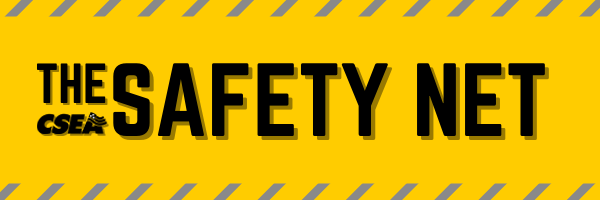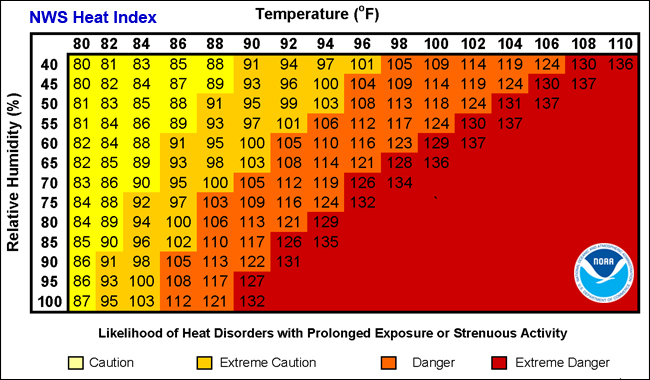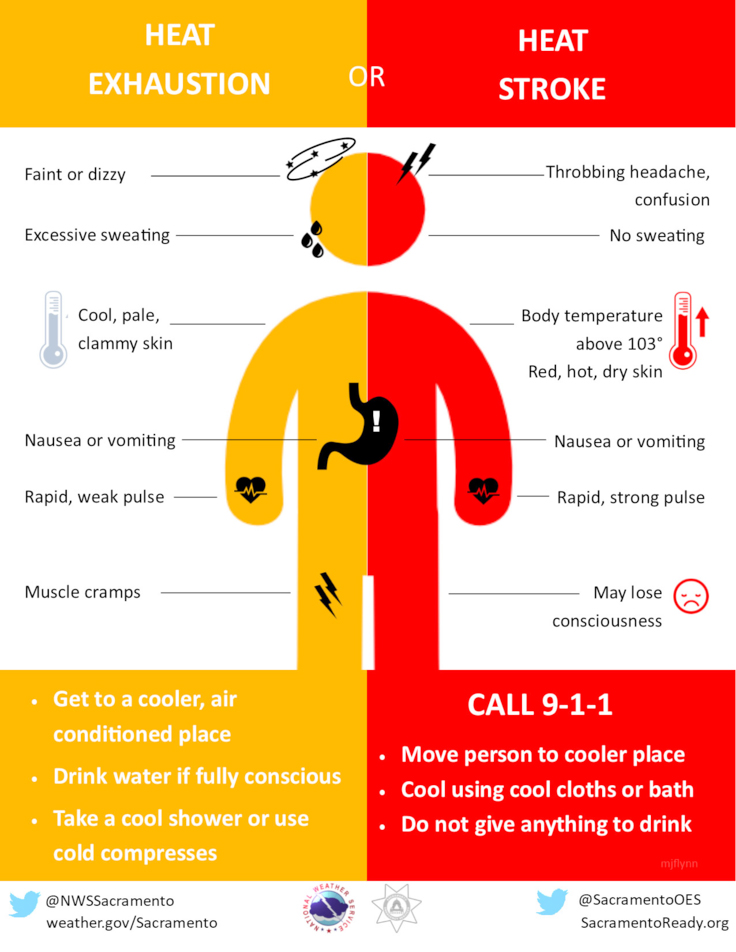
Extreme Heat Edition
TIPS FOR WORKING OUTSIDE DURING HOT WEATHER
In the summer, high temperatures and high humidity act together to prevent the body from shedding heat leading to heat related illnesses, heat exhaustion and heat stroke. The National Weather Service (NWS) has created the heat index chart to assist in identifying conditions where heat related illnesses are likely to occur. Those who work outdoors in the summer should be given clear guidance by their employer on the actions to be taken when conditions enter the portions of the chart where the danger or extreme danger of heat illnesses is likely. Here is the link for the NWS heat index chart: What is the heat index?

When weather conditions are forecast where the danger or extreme danger or heat stress or exists, the local weather conditions should be monitored and employees informed about the precautions to be taken to prevent illness. When outside, work time should be limited or postponed. With abundant cell phones and weather apps, monitoring for these conditions is easier than ever. The NWS offers nationwide, real-time weather advisories on its website, that can be customized to your zip code. Here is the link for the NWS national forecast site: National Weather Service

When working outside in the extreme heat, everyone should be trained to recognize the symptoms of the two most serious heat related illnesses (heat exhaustion and heat stroke), and to be watching co-workers for them. When they are observed, the best action to take is to get the person out of the heat and into a shelter or shade where they can cool off. This could be an air-conditioned building or vehicle. They should also be provided with a cool drink and cloths to help cool off. If their condition does not improve, then emergency medical services should be called. Here is the link for the American Red Cross fact sheet on heat emergency recognition and treatment: Heat Check | Extreme Heat Safety | Red Cross

New York state also has the Sun Safety Law, which requires state agencies to provide sun safety information to their employees who spend more than a total of five hours per week outdoors. This law, enacted in 2006, aims to protect employees from the potential dangers of overexposure to the sun, such as skin cancer. Agencies must provide information about the potential dangers of overexposure to the sun, available protections and their proper use, and any other information necessary for employees to protect themselves from the sun. The NYS Commissioner of Labor, in consultation with the NYS Commissioner of Education, determines the form and content of the sun safety information. The NYS Department of Labor has a guidance document on protecting workers in extreme heat: Employer Guidance: Protecting Outdoor Workers from Extreme Heat (P198)
OSHA has a webpage that provides overall information on protection workers from the effects of heat: Protecting Workers from the Effects of Heat
They also have a poster with information on keeping workers properly hydrated: Keeping Workers Well-Hydrated
MEMBER RESOURCES: OCCUPATIONAL SAFETY & HEALTH
Materials & Publications
View/download – A-Z list of fact sheets: cseany.org/safety-resources
Request Free Prints: Publications Order Form
Workshop Trainings & Webinars
View/Watch – webinar trainings: cseany.org/osh-webinars
CSEA Occupational Safety & Health (OSH) Specialists
Have a general safety concern?
Contact your OSH Specialist here: cseany.org/member-support
WORKERS’ COMPENSATION
Hurt at Work?
CSEA endorses the law firm of Fine, Olin and Anderman
Get started now by clicking https://www.foalaw.com/csea-members/
Or call at 855-637-1207

